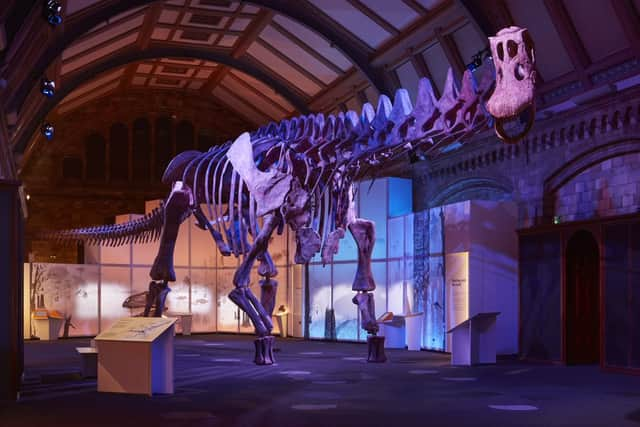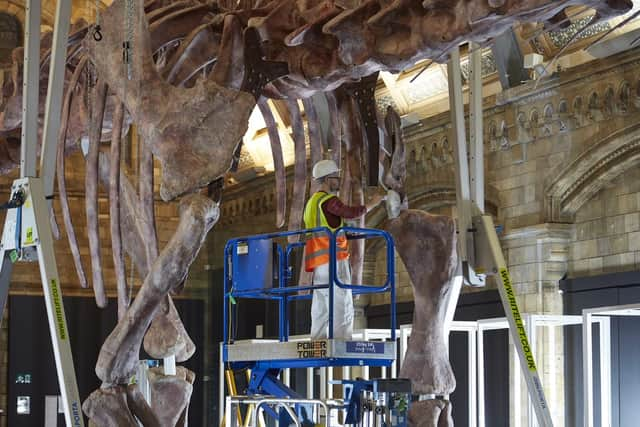Natural History Museum’s new Titanosaur: Biggest dinosaur ever discovered on display
and live on Freeview channel 276
One of the biggest animals ever to walk the Earth is now on show at the Natural History Museum.
Around four times heavier than Dippy the Diplodocus, 12 metres longer than Hope the blue whale, the patagotitan is visiting Europe for the first time since its discovery in Argentina in 2010.
Advertisement
Hide AdAdvertisement
Hide AdMeasuring some 37m (121ft) from nose to tail and weighing around 57 tonnes, the patagotitan lived around 101 million years ago during the Cretaceous Period.
Displayed alongside the skeleton, which is a cast, are real fossils, including a 2.4-meter-long (8 feet) femur that weighs around half a metric ton.


Director of the Natural History Museum Dr Doug Gurr said: “There is nothing that comes close to Patagotitan walking the Earth today.
“In the case of this prehistoric giant, seeing is believing.
Advertisement
Hide AdAdvertisement
Hide Ad“The large animals that we share the planet with today continue to play vital ecosystem roles – from elephants and rhinos to blue whales – but they are increasingly at risk of extinction from habitat loss and other devastating human impacts.
“We must connect the next generation with the natural world to protect the large animals of today before it’s too late.”


The replica skeleton is on loan from Argentina’s Museo Paleontológico Egidio Feruglio (MEF), whose staff unearthed the original fossils.
A specialist department of freight company IAG Cargo was tasked with transporting the dinosaur from Argentina.
Advertisement
Hide AdAdvertisement
Hide AdThe replica skeleton only just fits in its Waterhouse Gallery, the largest exhibition space at the Natural History Museum, and the floor also had to be strengthened to accommodate the giant specimen.
Titanosaur: Life as the Biggest Dinosaur is a temporary exhibition which will take visitors on a journey across the life of a giant titanosaur –from the elusive egg laid in its nest millions of years ago, to evidence of a fearsome predator that took a bite out of its tail in a fight for survival.
The exhibition officially opens on Friday March 31 and runs until January 7 next year. It is a ticketed event.
Comment Guidelines
National World encourages reader discussion on our stories. User feedback, insights and back-and-forth exchanges add a rich layer of context to reporting. Please review our Community Guidelines before commenting.
